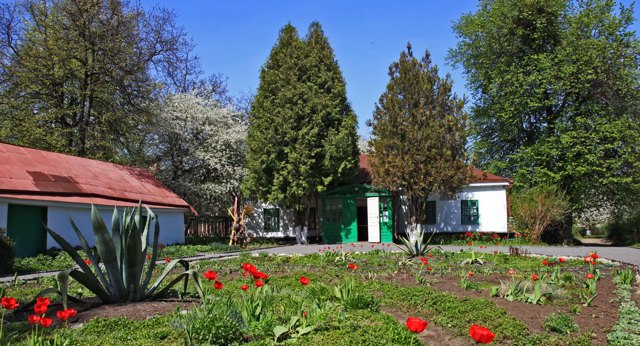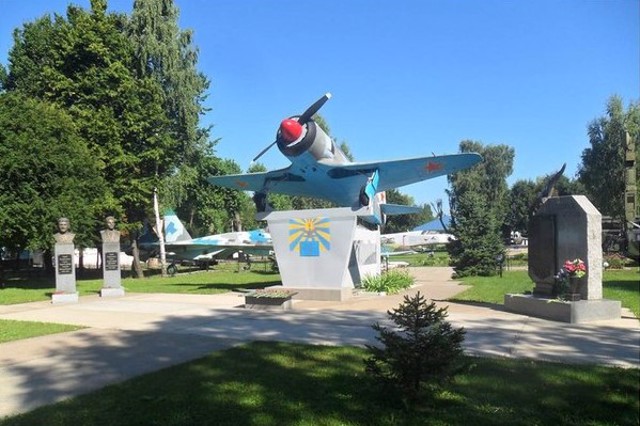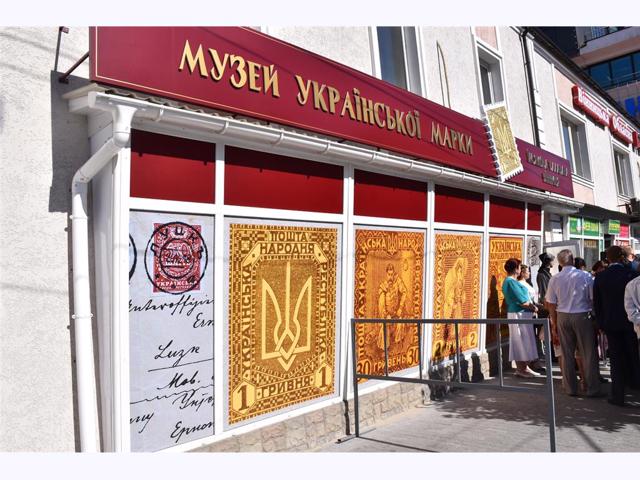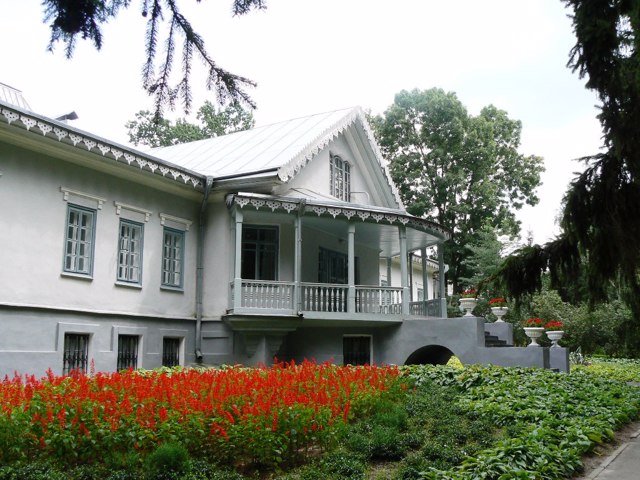Functional temporarily unavailable
General information about Vinnytsia
The city of Vinnitsa is a small regional center on the banks of the Southern Bug. Founded as a castle-fortress in 1362-63. Lithuanian princes Koriatovichi (Koryatovichi). The first wooden castle was built in the XIV century. on the left bank, the second - in the XVI century. on Kemp Island (festival), New Castle - in the 17th century. on the high right bank. The flourishing of the city fell on the period of Polish rule of the 16th-17th centuries, when the main architectural sights were erected - a complex of buildings of the Dominican and Jesuit monasteries and a collegium with a defensive wall. The inhabitants fought against Poland, took part in the popular uprising of Paly in 1702-04, in the Haidamak movements of the 30-60s. XVIII century In 1793, the city, together with the Right-Ban ...
The city of Vinnitsa is a small regional center on the banks of the Southern Bug. Founded as a castle-fortress in 1362-63. Lithuanian princes Koriatovichi (Koryatovichi). The first wooden castle was built in the XIV century. on the left bank, the second - in the XVI century. on Kemp Island (festival), New Castle - in the 17th century. on the high right bank. The flourishing of the city fell on the period of Polish rule of the 16th-17th centuries, when the main architectural sights were erected - a complex of buildings of the Dominican and Jesuit monasteries and a collegium with a defensive wall. The inhabitants fought against Poland, took part in the popular uprising of Paly in 1702-04, in the Haidamak movements of the 30-60s. XVIII century In 1793, the city, together with the Right-Bank Ukraine, went to Russia and soon became the main trade center of Podillya. During the Second World War, Hitler's headquarters "Wolf's Lair" was located nearby. The city is inextricably linked with the names of the outstanding scientist-surgeon N. Pirogov and the writer M. Kotsyubinsky. Vinnitsa City Day is celebrated on the second Saturday-Sunday of September.
Місто Вінниця - невеликий обласний центр на берегах Південного Бугу. Засноване як замок-фортеця в 1362-63 рр. литовськими князями Коріатовичами (Корятовичами). Перший дерев'яний замок був споруджений у XIV ст. на лівому березі, другий - у XVI ст. на острові Кемпа (фестивальному), Новий замок - в XVII ст. на високому правому березі. Розквіт міста припав на період польського панування XVI-XVII ст., коли були зведені основні архітектурні пам'ятки - комплекс споруд домініканського та єзуїтського монастирів і колегіуму з оборонною стіною. Жителі воювали проти Польщі, брали участь у народному повстанні Палія 1702-04 рр., гайдамацьких рухах 30-60-х рр. XVIII ст. У 1793 році місто разом з Правобережною Україною відійшло до Росії і незабаром стало головним торговим центром Поділля. У рок ...
Місто Вінниця - невеликий обласний центр на берегах Південного Бугу. Засноване як замок-фортеця в 1362-63 рр. литовськими князями Коріатовичами (Корятовичами). Перший дерев'яний замок був споруджений у XIV ст. на лівому березі, другий - у XVI ст. на острові Кемпа (фестивальному), Новий замок - в XVII ст. на високому правому березі. Розквіт міста припав на період польського панування XVI-XVII ст., коли були зведені основні архітектурні пам'ятки - комплекс споруд домініканського та єзуїтського монастирів і колегіуму з оборонною стіною. Жителі воювали проти Польщі, брали участь у народному повстанні Палія 1702-04 рр., гайдамацьких рухах 30-60-х рр. XVIII ст. У 1793 році місто разом з Правобережною Україною відійшло до Росії і незабаром стало головним торговим центром Поділля. У роки Другої світової війни неподалік знаходилася ставка Гітлера "Вовче лігво". Місто нерозривно пов'язане з іменами видатного вченого-хірурга М. Пирогова та письменника М. Коцюбинського. День міста Вінниці відзначається в другу суботу-неділю вересня.
Сплануй своє перебування у Vinnytsia
What to see and where to go in Vinnytsia
Tourist attractions and museums of Vinnytsia

Kotsyubynsky Literary Memorial Museum
Museum / gallery
The Mykhailo Kotsyubynsky Literary Memorial Museum was opened in the house where the future writer was born and lived until he was 33 years old. The estate was built by his grandfather M. Abaz at the beginning of the XIX century, having acquired land on the outskirts of Vinnytsia, in Zamość. In 1926, on the initiative of the writer's brother, a restoration was carried out and a museum was established. The exposition is built on a monographic principle and is located in five rooms of Kotsyubynsky's parents' house. The exhibits (lifetime editions, translations, paintings) consistently reveal the writer's creative path and his public activities.

Museum of the Air Force of the Army of Ukraine
Museum / gallery
The Military History Museum of the Air Force of the Armed Forces of Ukraine in Vinnytsia was established in 2001 as a museum of the Air Force of Ukraine. In 2005, it was replenished with an exposition dedicated to the air defense forces, which were then structurally part of the Armed Forces. The museum is located on the territory of the former General Staff of the Air Force of Ukraine in Vinnytsia. In Soviet times, it was the headquarters of the 24th Air Army, and before that - the headquarters of the 43rd Air Force of Long-range Aviation, which was formed in 1949 on the basis of the 2nd VA DA. The museum has collected many samples of aircraft, anti-aircraft missiles, radar equipment of different times. The exposition includes 16 aircraft of different classes, from the Yak-11 training aircraft to the fourth-generation Su-27 fighter, as well as 4 helicopters. Of particular interest are the launchers of anti-aircraft missile systems S-300V1, S-300PS, S-200V "Vega", S-125M1 "Neva", "S-75M2" Volkhov ", Buk-1M". Foreigners must obtain a permit from the Ministry of Defense of Ukraine to visit the museum.

Museum of the Ukrainian stamp
Museum / gallery
Museum of the Ukrainian stamp named after Yakov Balaban was opened in 2016 in the building of the Vinnytsia Regional Children's Library. The exposition is based on a collection of stamps of the patron Alexander Balaban, the son of the captain of the Ukrainian People's Republic Yakov Balaban, who emigrated to the United States. Unique examples of Ukrainian postal history, stamps of different historical periods - revolutionary 20s, pre-war 40s, letters with stamps of 1918, stamps of ZUNR for three crowns, modern blocks, etc. are presented. The exhibition also has miniatures from limited collections, which today exist in only a few copies in the world.

National Museum-Estate Pirogov
Palace / manor , Museum / gallery
Mykola Pirogov National Museum-Estate is located in a picturesque park on the lake shore on the southwestern outskirts of Vinnytsia. An outstanding surgeon bought the estate "Cherry" in 1859, where he lived and worked until his death in 1881. The museum and memorial office of the father of military field surgery were opened in a one-and-a-half-storey manor house. Nearby is a museum-pharmacy with the interiors of the reception and operating room. 1.5 km from the estate, in the former village of Sheremetka is the Nikolaev Church-Mausoleum, where the embalmed body of Pirogov is kept.

Vinnytsia Museum of Local Lore
Museum / gallery
Vinnytsia Regional Museum of Local Lore occupies one of the premises of the former Jesuit monastery - the current historical and architectural complex "Walls". It was founded in 1918 on the initiative of representatives of the local intelligentsia. In 1970, a new building was completed and the exposition was significantly renovated. Currently, the collection has 200,000 exhibits. There are unique items belonging to the Scythian and Sarmatian periods, large numismatic collections, ethnographic collection: pottery, weaving, embroidery. folk painting. A mammoth skeleton found in the region is presented.
Reviews Vinnytsia
Geographical information about Vinnytsia
| {{itemKey}} | {{itemValue}} |
|---|---|
| Region |
Vinnytsia |

